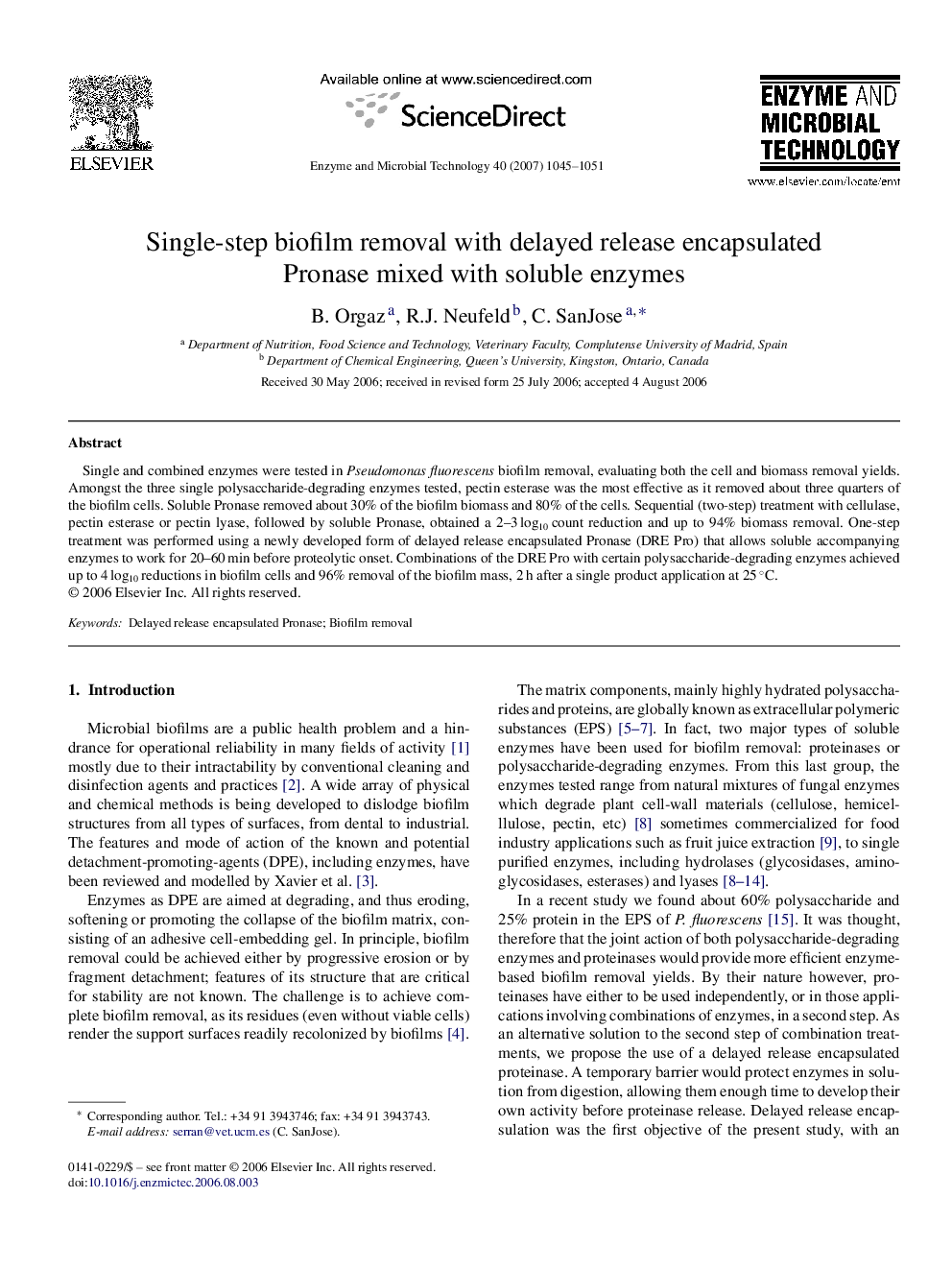| Article ID | Journal | Published Year | Pages | File Type |
|---|---|---|---|---|
| 18141 | Enzyme and Microbial Technology | 2007 | 7 Pages |
Single and combined enzymes were tested in Pseudomonas fluorescens biofilm removal, evaluating both the cell and biomass removal yields. Amongst the three single polysaccharide-degrading enzymes tested, pectin esterase was the most effective as it removed about three quarters of the biofilm cells. Soluble Pronase removed about 30% of the biofilm biomass and 80% of the cells. Sequential (two-step) treatment with cellulase, pectin esterase or pectin lyase, followed by soluble Pronase, obtained a 2–3 log10 count reduction and up to 94% biomass removal. One-step treatment was performed using a newly developed form of delayed release encapsulated Pronase (DRE Pro) that allows soluble accompanying enzymes to work for 20–60 min before proteolytic onset. Combinations of the DRE Pro with certain polysaccharide-degrading enzymes achieved up to 4 log10 reductions in biofilm cells and 96% removal of the biofilm mass, 2 h after a single product application at 25 °C.
